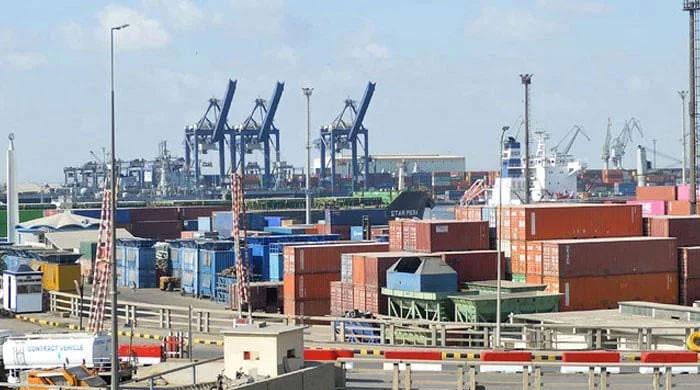Potential Impact of US Tariffs on Pakistan’s Economy
- Expert advocates for enhancing the competitiveness of the country’s manufacturing sector.
- Dr. Sohail notes Pakistan’s limited revenue collection from US imports.
- He acknowledges the validity of trade policy issues identified by the US.
ISLAMABAD: As the government led by Prime Minister Shehbaz Sharif endeavors to address the 29% reciprocal tariff imposed by the US, initial projections indicate that these duties could cost Pakistan between $500 to $700 million, according to a report by The News on Wednesday.
Several experts view this situation as a potential opportunity for Pakistan, especially if tariffs on regional countries, particularly China, are increased. While it’s too early to accurately determine the precise gains or losses, it is certain that this action introduces uncertainty and may trigger a recession in US markets.
Last week, the US administration declared reciprocal tariffs on various nations, including a 29% duty on goods from Pakistan, in response to Islamabad’s 58% tariff on US products.
A senior official from the Ministry of Commerce stated that Pakistani exports to the US will now be subject to a total tariff of 39%, which includes a 10% baseline import duty and the new 29% reciprocal tariff.
The United States is Pakistan’s largest single-country export destination, with annual exports of approximately $6 billion, primarily consisting of textiles.
According to a paper prepared by the Commerce Ministry for the Prime Minister, these new reciprocal tariffs are in addition to any other existing duties, fees, taxes, or charges. For example, if the current tariff on synthetic apparel is 32%, the new tariff will be 61% (32+29).
In response, PM Shehbaz has established a 12-member steering committee to address these reciprocal tariffs.
Finance Minister Muhammad Aurangzeb has also announced that a high-level delegation will visit Washington to articulate Pakistan’s position and engage in further discussions with US officials.
Dr. Safdar Sohail, a former bureaucrat from the Trade and Commerce group, commented on the potential impact of these tariffs, suggesting that the US move could be viewed as a combination of a Trade Policy Review and the activation of trade defense laws such as anti-dumping, countervailing measures, and punitive actions. Normally, such actions would take years through the WTO system.
He noted that because a single country is initiating these measures, the approach needs to be innovative and swift, ensuring that the appellate process begins concurrently for everyone involved.
Dr. Sohail believes that the Pakistan Business Council’s (PBC) assessment of the reciprocal tariffs’ impact on Pakistan is balanced. He advised against alarm and panic, urging constructive engagement with this crucial bilateral trade partner.
Given Pakistan’s serious external sector vulnerability under the IMF program, Dr. Sohail emphasized the need for an industrial policy that promotes competitive and green manufacturing under a unified framework, leveraging the IMF Resilience and Sustainability Facility loan.
He acknowledged that many of the trade policy issues identified in the US diagnostic of Pakistan’s Trade Policy three days prior are indeed valid.
Addressing concerns about the trade deficit between Pakistan and the US, Dr. Sohail argued that Washington’s approach should be tempered, as Pakistan does not collect substantial revenue from US imports.
He added that resolving most of the US concerns should be manageable, particularly as some are already being addressed through IMF reforms.
Dr. Sohail stressed that the primary challenge is integrating these concerns, along with the EU’s Green concerns, into Pakistan’s Green Industrialisation Strategy and implementing it effectively, despite entrenched non-green and unfair commercial practices.
He concluded that delaying this integration would be detrimental, causing more significant developmental setbacks than the temporary increase in tariffs by the US.



Comments (0)
No comments yet. Be the first to comment!
Leave a Comment